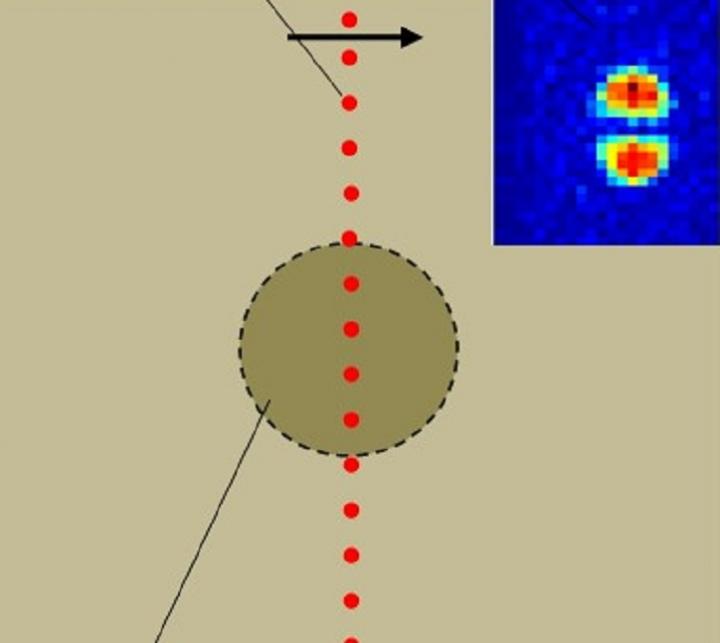
Sensor Detects Buried Objects from Moving Vehicle
A new laser-based sensor, developed by a team at the University of Mississippi, can detect buried objects such as land mines even while the detector is in motion. The new device, called a Laser Multi Beam Differential Interferometric Sensor (LAMBDIS), provides detection capabilities comparable to laser Doppler vibrometers (LDVs), but is less sensitive to motion, allowing it to be used aboard a moving vehicle.
LAMBDIS uses a linear array of 30 laser beams directed onto the interrogated area. A receiver lens and a shearing interferometer are used to combine the light that is reflected from different points on the ground on a photodetector array (PDA), resulting in interference signals on the PDA outputs. The frequency of the signals is proportional to the vibration velocity between the illuminated points; this is due to the Doppler effect. Processing of the PDA signals reveals vibrations between the illuminated points on the surface.
“Unlike LDVs, the LAMBDIS doesn’t use an internal reference beam, but detects a Doppler shift by using interference of light reflected from different points on the object,” researcher Vyacheslav Aranchuk said. “Due to the lack of a reference beam, the Doppler frequency caused by the sensor motion is practically the same for all reflected beams and is automatically subtracted from the interference signals. As a result, LAMBDIS has very low sensitivity to the motion of the sensor itself, while having high sensitivity to relative vibration between points on the object.”

This is vibration imaging of a buried object using LAMBDIS. Courtesy of V. Aranchuk, University of Mississippi.
In laboratory and field tests, LAMBDIS was able to detect buried objects 7.5 meters to 20 meters away and from a vehicle traveling at 3.8 meters per second (about 8.5 miles per hour). These results were comparable to a stable, platform-mounted LDV. Researchers tested the device both with airborne and seismic sound sources and with different scanning angles, suggesting the device could provide accurate results in a variety of real-world conditions.
In addition to detecting land mines, LDVs are used to inspect automobiles and aircraft components; to assess bridge and structure vibrations; to calibrate equipment and study materials; and in dental and biomedical applications. In cases where environmental noise or movement hinders the use of LDV devices for these applicatilons, LAMBDIS could be of use.
“The lingering scourge of land mines presents a serious challenge to rapid and accurate interrogation of large areas from moving vehicles,” Aranchuk said. “Our new device overcomes this challenge by using a series of laser beams and then combining their signals to create a rapid-detection scheme that also is robust enough to compensate for motion and other noise that could overwhelm other techniques. LAMBDIS provides measurement of vibration fields with high sensitivity, while having low sensitivity to the whole body motion of the object, or sensor itself, allowing for the operation from a moving vehicle.”
The research will be presented at the OSA Laser Congress and Exhibition, Sept. 29-Oct. 3, 2019, in Vienna.
Published: September 2019